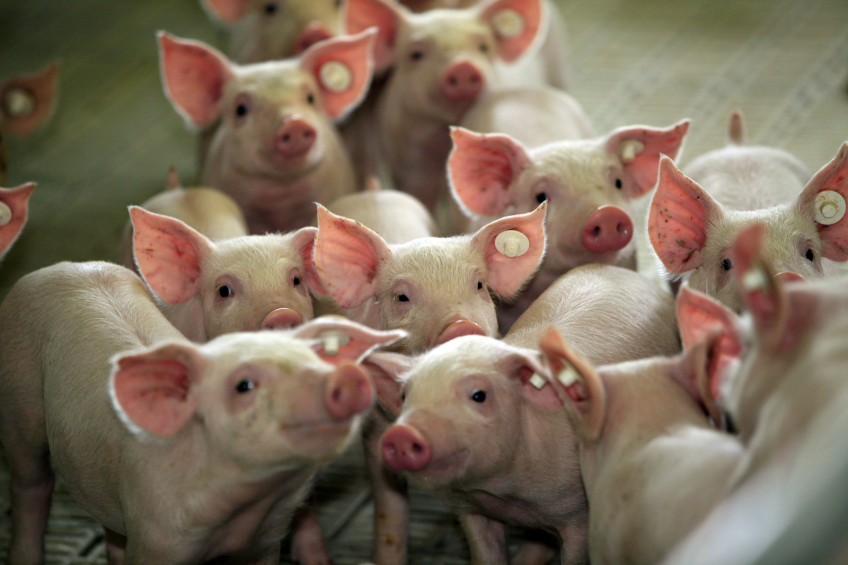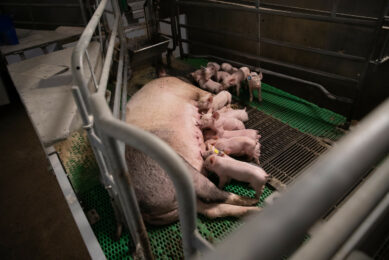Targeted delivery of butyric acid in the intestinal tract

Butyric acid is considered to be one of the most efficient energy sources for the pig’s intestines. Making sure it is active right there in the intestinal tract – and not earlier – butyric acid is often coated. How exactly does this process work?
By Dr Brian Kremer, regional sales manager, Kemin Industries
Gut integrity is of major importance for producers in today’s environment. The impact on the performance of pigs from the standpoint of improving gut function is a paramount goal. Many producers seek performance gains in their operations by focusing on impacting gut health with new and innovative solutions. For many years, supplementation of organic acids into nursery pig feed has enhanced livestock performance.
In monogastric animals, short-chain fatty acids (SCFA) promote the growth of tissue lining the gastrointestinal (GI) tract. Short-chain fatty acids are produced in small amounts when dietary fibre is fermented in the colon. There are several different SCFA including formic acid, propionic acid, acetic acid and butyric acid. Of the SCFA, butyric acid is considered one of the most efficient energy sources for intestinal cells. Butyric acid is a main energy source to intestinal epithelium, particularly for colonocytes. Providing energy for the cells in the form of butyrate may lead to improved performance due to improved gut function.
Research has shown butyric acid is essential for proliferation, differentiation and apoptosis of epithelial cells. The absorptive epithelial cells found on the intestinal villi use the energy provided by butyric acid to stimulate villi growth. Increasing the growth of the enterocytes can increase the ability of villi to absorb nutrients. Supplementing butyric acid can provide a positive impact for animals, as animals are able to utilise nutrients more efficiently. However, by feeding unprotected forms of butyric acid, little material is bypassed to the distal portion of the GI tract.
Freezing technology
Kemin’s proprietary MicroPearls spray freezing technology targets the release of active materials in the animal’s digestive system, allowing key nutrients to be absorbed more efficiently. The technology is a special process including the atomisation of material, use of liquid nitrogen and the specific matrix of nutrient composition.
This technology cools the core material quickly, protecting it from degradation. The process also allows the product to be durable for transportation and storage. Other benefits from the technology include protecting the material to withstand the pelleting process and maintaining the integrity of the nutrients in feed.
ButiPearl, an embedded source of butyric acid encapsulated using the spray freezing process, provides a slow release in the digestive tract. The encapsulated butyric acid increases delivery of butyric acid to the lower GI tract, stimulating utilisation along the small and large intestine and generating maximum positive impact. By delivering butyric acid along the GI tract, the product can be key to nutritional programmes at times of stress for animals, such as the starter phase or recovery periods after intestinal disturbance.
The manufacturing process greatly minimises the pungent odour associated with butyric acids or salts. By having a higher butyrate concentration, lower inclusion rates in the feed can produce desired effects. Another benefit is the use of calcium butyrate as compared to sodium butyrate because it is more stable and easier to handle. It is also considered less hygroscopic; protecting the salt from dissolving when mixed in the feed and less soluble which dissolves slower when presented in a liquid environment allowing a sustained release of butyric acid.
In order to support the benefits of butyric acid supplementation, Kemin has conducted various studies in nursery pigs. In one nursery trial including the spray freezed butyric acid and feed acidifier KemGest for swine, the company measured the various acids on weaned pigs in the nursery phase over a five-week period. Two of the five treatments included the encapsulated butyric acid at 2 lbs (0.9 kg)/ ton of feed and were compared to an uncoated source of butyric acid and the control group. At the end of the trial, the treatments including the coated butyric acid increased body weight of the pigs between 2-4%. The combination of the acid and the feed acidifier increased body weight at an average of 1.90 lbs (0.86 kg).
Another trial was conducted in a commercial nursery setting to study dose response. The coated butyric acid was supplemented into a complete feed at 1 lb (0.45 kg)/ ton and 2 lbs (0.9 kg)/ ton and compared to a control diet, which did not include any encapsulated butyric acid product. After 42 days, pigs fed the coated butyric acid in both groups performed similarly, and both performed better than the control pigs.
The pigs fed the butyric acid in the first group were 2.64 lbs (1.20 kg) heavier after 42 days compared to the control diet. Additionally, there were trends for improved feed to gain when the coated butyric acid was included in the diets.
Additional trials in commercial settings have been conducted with coated butyric acid with similar improvements observed. These trials indicate that this particular butyric acid product is effective at improving efficiency of pigs in the nursery phase when reared in a wean-to-finish barn. It was most effective at an inclusion rate of 1 lb (0.45 kg)/ ton; and a return-on-investment ranging from 10:1 to 20:1 was observed.
Certain statements may not be applicable in all geographic regions. Product labelling and associated claims may differ based upon regulatory requirements.
Source: Pig Progress magazine Vol 30 Nr 1, 2013











